Three Years Of Passion
by Arctic PASSION partners | Published: 01-Oct-24 | Last updated: 01-Oct-24 | Tags : Results | category: NEWS
Last summer, Arctic PASSION celebrated three full years of action! It is a good time to look back to see what we have achieved this far and assess how we are doing in terms achieving our main goals by the end of 2025.
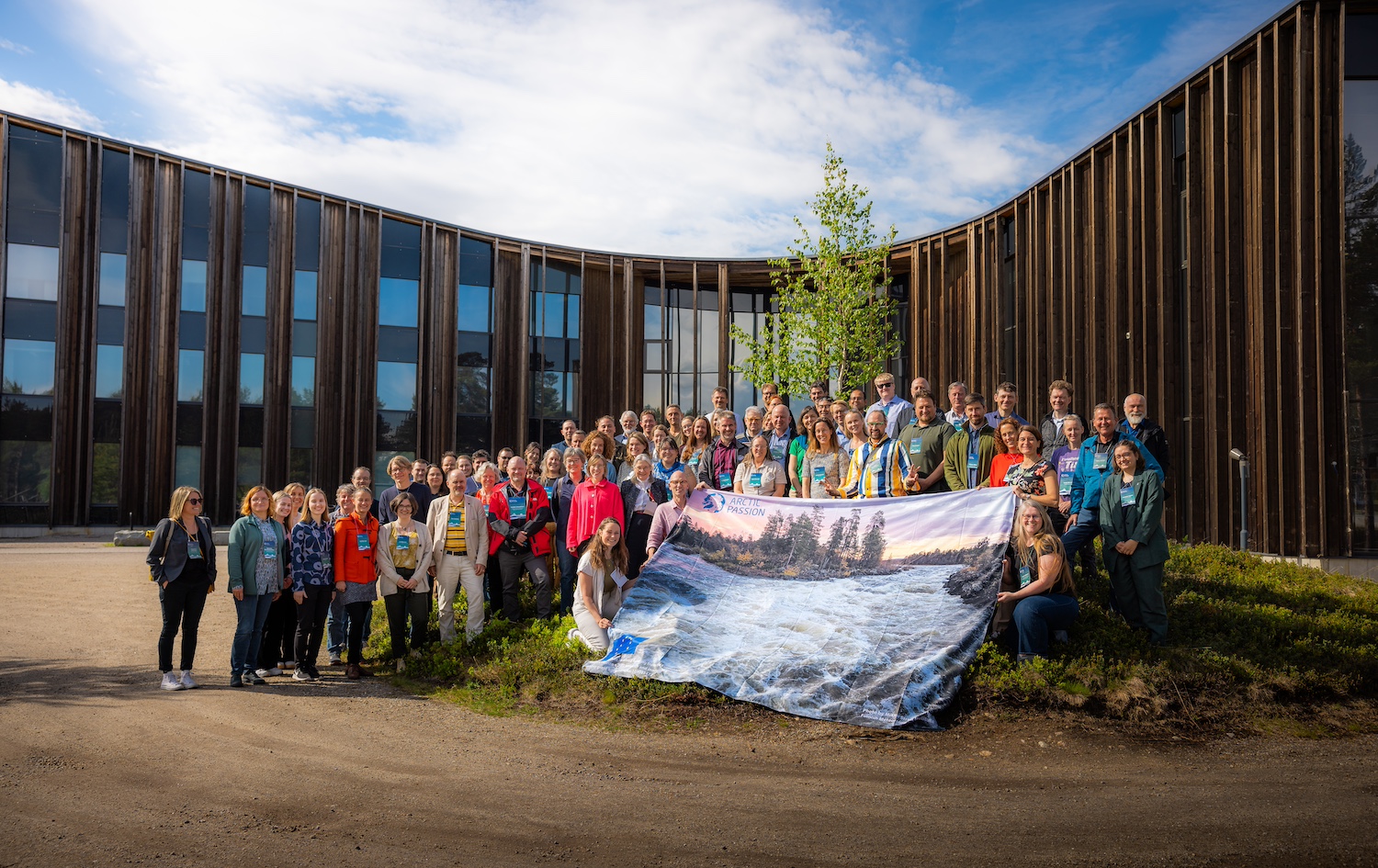
Our goals
The scientific, societal, economic, and environmental challenges associated with the changing Arctic are immense. Through Arctic PASSION, we are working to address issues like fragmented data and lack of user-focused observations. Our aim is to co-create a more integrated pan-Arctic observing system through international collaboration and involving Indigenous Peoples and local communities.
The Arctic observing system must allow access to unrestricted, high quality, science-based Earth observation information as well as consented Indigenous Knowledge and local knowledge. It needs to be more aligned with societal needs, helping monitoring environmental changes, improve prediction accuracy, and support informed decision-making. Read more about it in our paper on Sustaining Arctic Observing Networks' (SAON) Roadmap published in 2022.
The main objectives of Arctic PASSION include to enhance and integrate Arctic observations, improve Arctic data management, and optimise observing networks through numerical modelling. We will deliver eight new Arctic Services for users, and assess societal and economic benefits of the new observing system. Our key focus is on fostering international collaboration and clustering with other Arctic projects and initiatives to support policy and decision-making and to link Arctic observations and societal needs.
The main results so far
In Arctic PASSION, we are actively engaging with international partners at multiple levels to initiate a process of improving Arctic observing through collaboration and co-creation with international partners. The main results we have jointly achieved this far include:
- Enhancement of existing observations by new data, new instrumentation, calibration and processing schemes to unify observing protocols. A few examples include Arctic Sea ice and snow thickness data from buoy-based temperature measurements and deployment of underwater sound recorders in Qaanaaq.

Gustav Simigaq, Qillaq Danielsen, Malene Simon Hegelund, Quma Kvist and Carl Bror Isaksen deploying sound recorders in April 2023. Photo by Christian Sølbeck/Greenland Institute of Natural Resources.
- Establishment of the Atlantic-Arctic Distributed Biological Observatory (A-DBO) network and the pan-Arctic DBO network.
- Initiation of a synthesis results from Synoptic Arctic Survey (SAS) cruises 2020-22, which will be published in a series of synthesis papers.
- Creation of a set of Fiducial Reference Measurement (FRMs) datasets and satellite observations of key cryospheric components. Data are subsequently being processed, validated and uncertainties are calculated and made available through the Shipborne Radiometer Network. FRMs refer to high-quality, long-term, and well-documented measurements that serve as benchmarks for validating satellite data and other observational methods. FRMs are crucial for ensuring the accuracy, precision and reliability of remote sensing data in the Arctic, where environmental monitoring is particularly challenging due to harsh conditions and limited accessibility. FRMs follow the guidelines outlined by the GEO/CEOS Quality Assurance framework for Earth Observation (QA4EO).
- Development of an automatic glacier calving front processing pipeline and production of a high-resolution calving front product for Svalbard and a beta version for large parts of the Arctic.
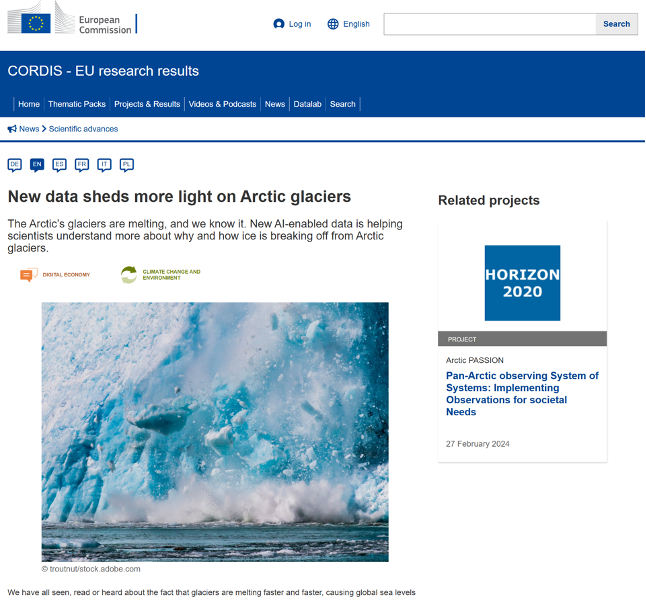
- Supply of ten terrestrial INTERACT research stations with instruments for which sensors require minimal human capacity are relevant to the terrestrial Shared Arctic Variables (SAV) on wildfires and permafrost degradation. establish ten terrestrial environmental monitoring sites in the Arctic. You can read more about the collaboration between Arctic PASSION and INTERACT - International Network for Terrestrial Research and Monitoring in the Arctic on the website of INTERACT.
- Establishment and good progress of SAV Expert Panels for ‘wildfire’, ‘permafrost’, and ‘sea ice’. Indigenous Peoples’ representatives and local experts are members of the panels. Collaboration with the US RNA CoObs project and added resources from Finland and Canada.
- Development of a web service offering data standardisation following FAIR (Findability, Accessibility, Interoperability, and Reusability) requirements where users could upload their data, configure the standardisation process and get their data back.
- Establishment of a unified data catalogue supporting SAON and guidance/training material. Long-term data storage to archive and publish arctic data and metadata. In total, over 5000 datasets from the Arctic realm have been published in PANGAEA during the last 18 months, including own project datasets.

The new web service for harmonisation of data according to the FAIR guiding principles is available through the SAON portal.
- Creation of first design experiments for model support of observational networks on safe Arctic navigation in ice covered waters; set-up of an Observing System Simulation Experiment for improving short-range weather prediction and climate reanalysis; identification of the most sensitive parameters regarding the simulated maximum active layer depth of permafrost for different climatic and ecosystem conditions; development of a new spatio-temporal modelling software package to reconcile the mass balance of the Svalbard marine-terminating glaciers.
- Four of our Arctic services have reached a state of online accessibility, four more services are going to reach maturity in the coming months. You can read more about these services on our website.
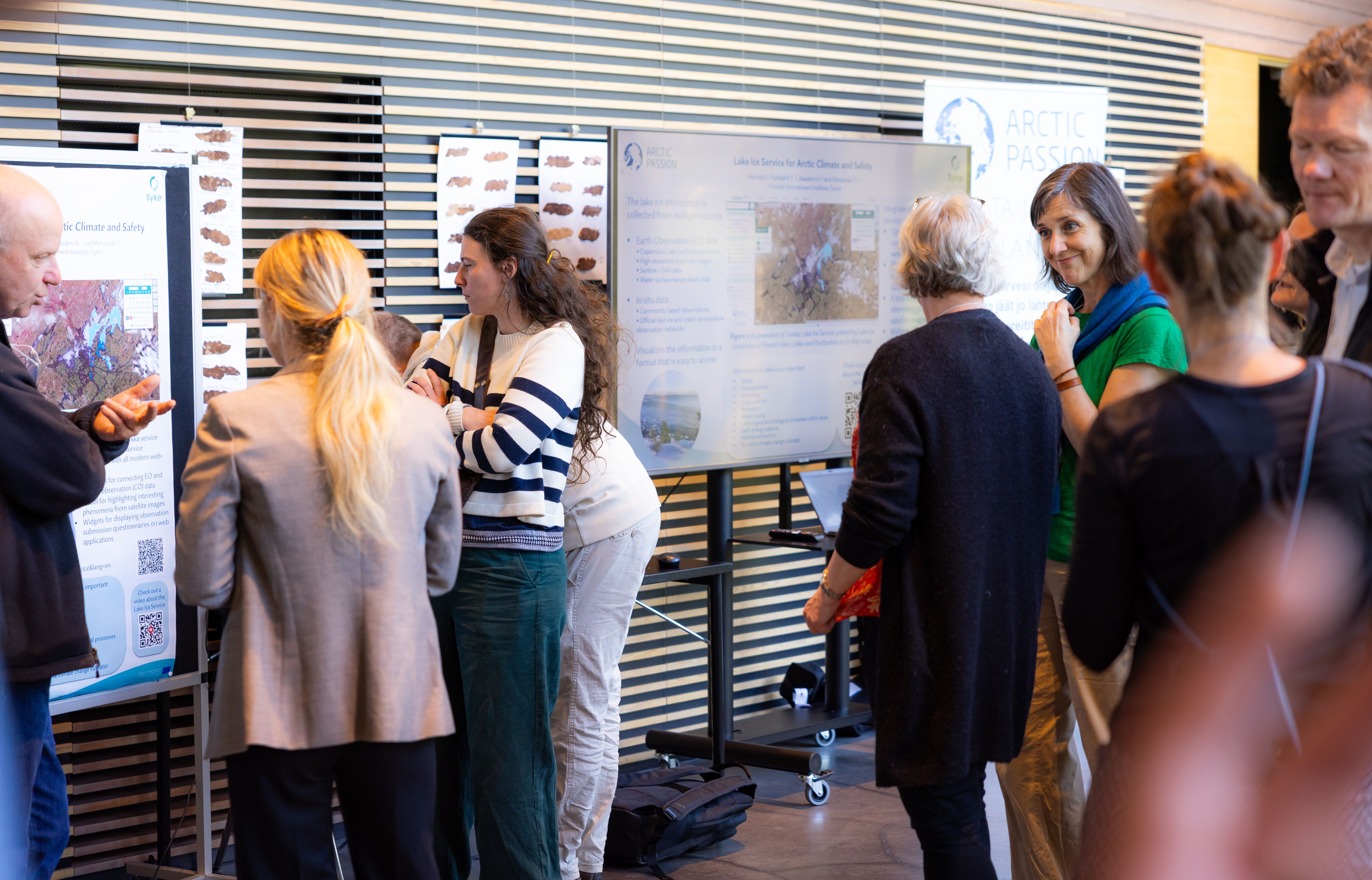
The new Arctic services created interest during our Innovation Expo in Sajos Cultural Center, Inari/Aanaar in June 2024. Photo: Ville-Riiko Fofonoff.
- Using the benefit assessment tool developed for our services and SAVs to evaluate societal benefits of the observing systems in the Arctic; assessing the benefit potential and benefit-cost ratios for selected Services, considering both monetised and non-monetised benefits.
- Creation of policy briefs with results from dialogues and interviews on data needs and offers with local and regional policy makers, and a policy briefing at the European Parliament; creation of an information document for the Senior Arctic Officials and the Arctic Council Working Groups on our activities.
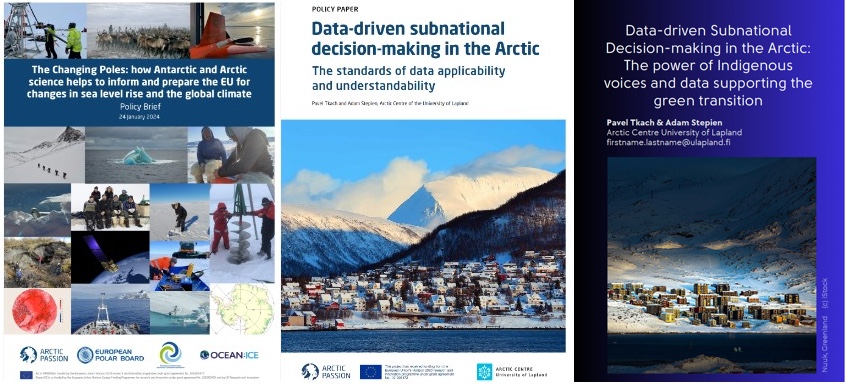
Arctic PASSION delivers policy briefs to decision-makers. The policy briefs as well as our other publications are freely available via Arctic PASSION community in Zenodo.
- Creation of a strawman for a synthesis and roadmap based on work from all project actions and dialogue with international initiatives to improve the Arctic observing system
- Continuous dissemination of news on the project and availability of project resources and outcomes via our website in addition to the following social media channels: YouTube, Instagram, LinkedIn, Facebook and X.

- A “Sharing Circle for Early Career Professionals and Arctic Youth” was organized jointly with the Association of Polar Early Career Professionals (APECS). The event concept serves as an inspiration for youth activities in the new EU funded project “Youth Together for Arctic Futures”. You can find more information about the Sharing Circle and the participants' Arctic PASSION Ambassador projects on our website.
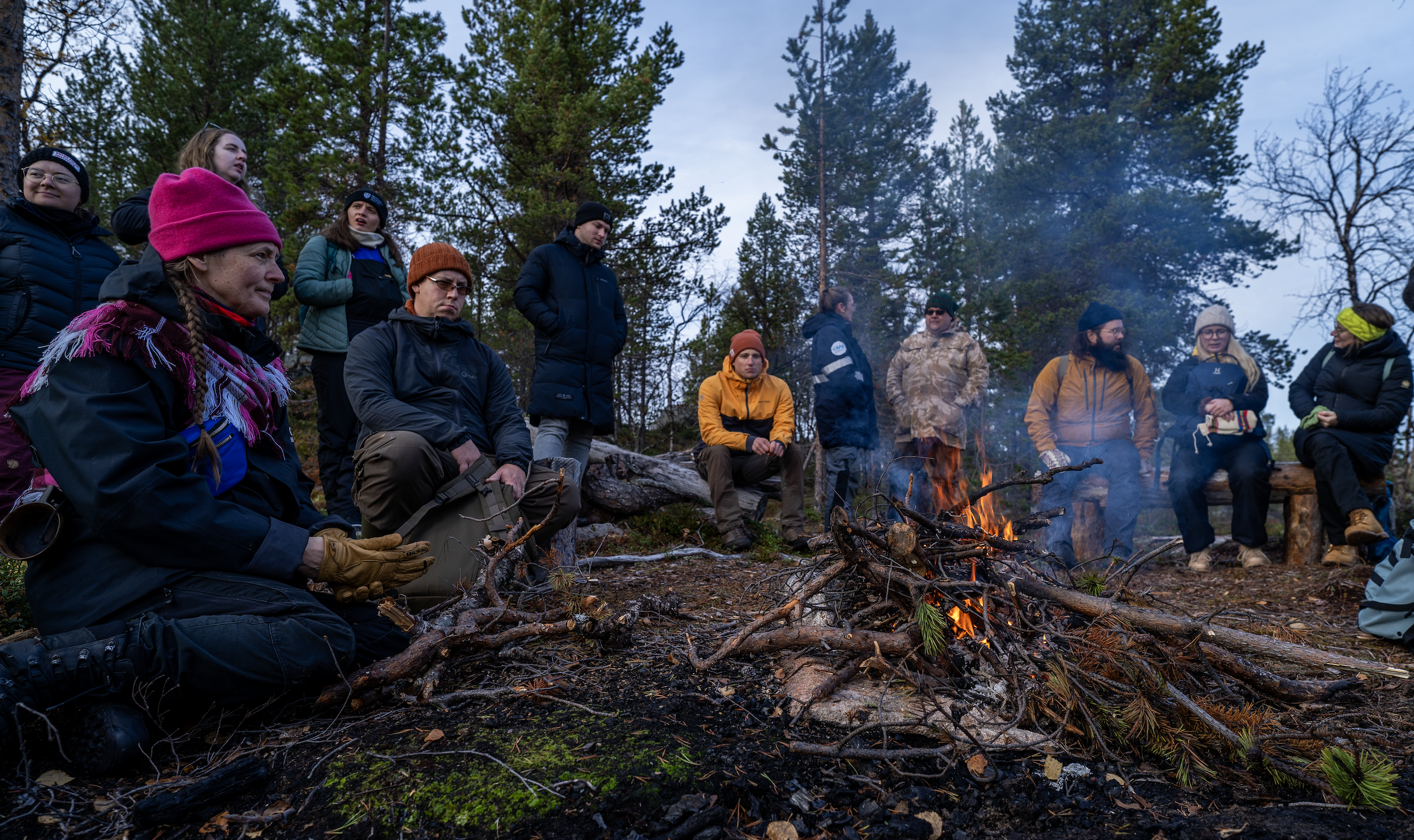
- Dissemination via 29 publications, outreach, events organised, collaboration and engagement with other over EU projects and project deliverables.
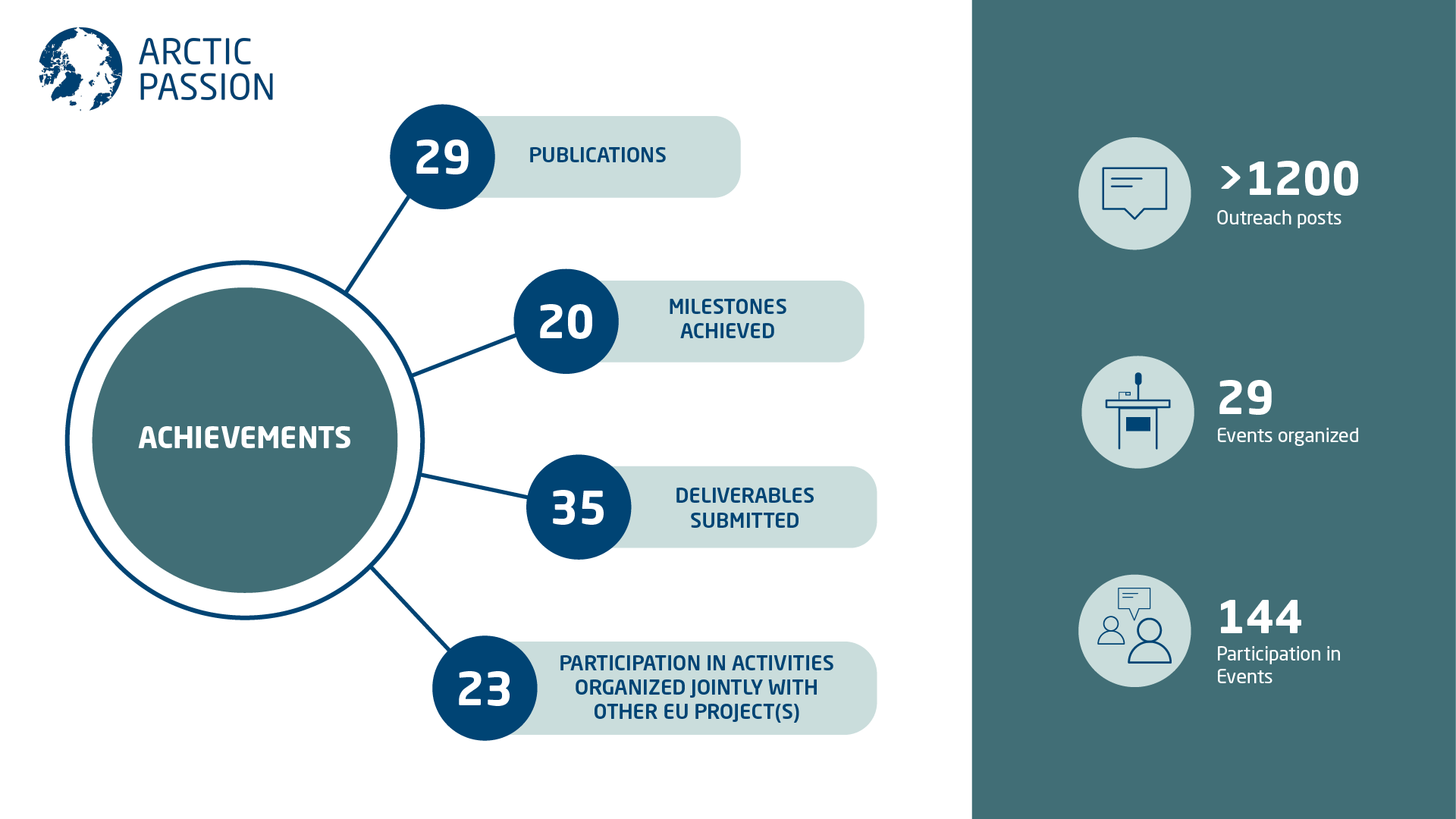
Some of the achievements in numbers reported in our 36-month report.
The Arctic PASSION project will continue until the end of 2025. Our progress beyond the state of art so far includes:
- Launch of the Atlantic-Arctic Distributed Biological Observatory (A-DBO) network as an agreed framework to internationally coordinate and benefit from joint sampling of hotspots in the Atlantic Arctic, and its inclusion into a pan-Arctic observatories network. A-DBO is also highlighted on EU's Horizon Results Platform.
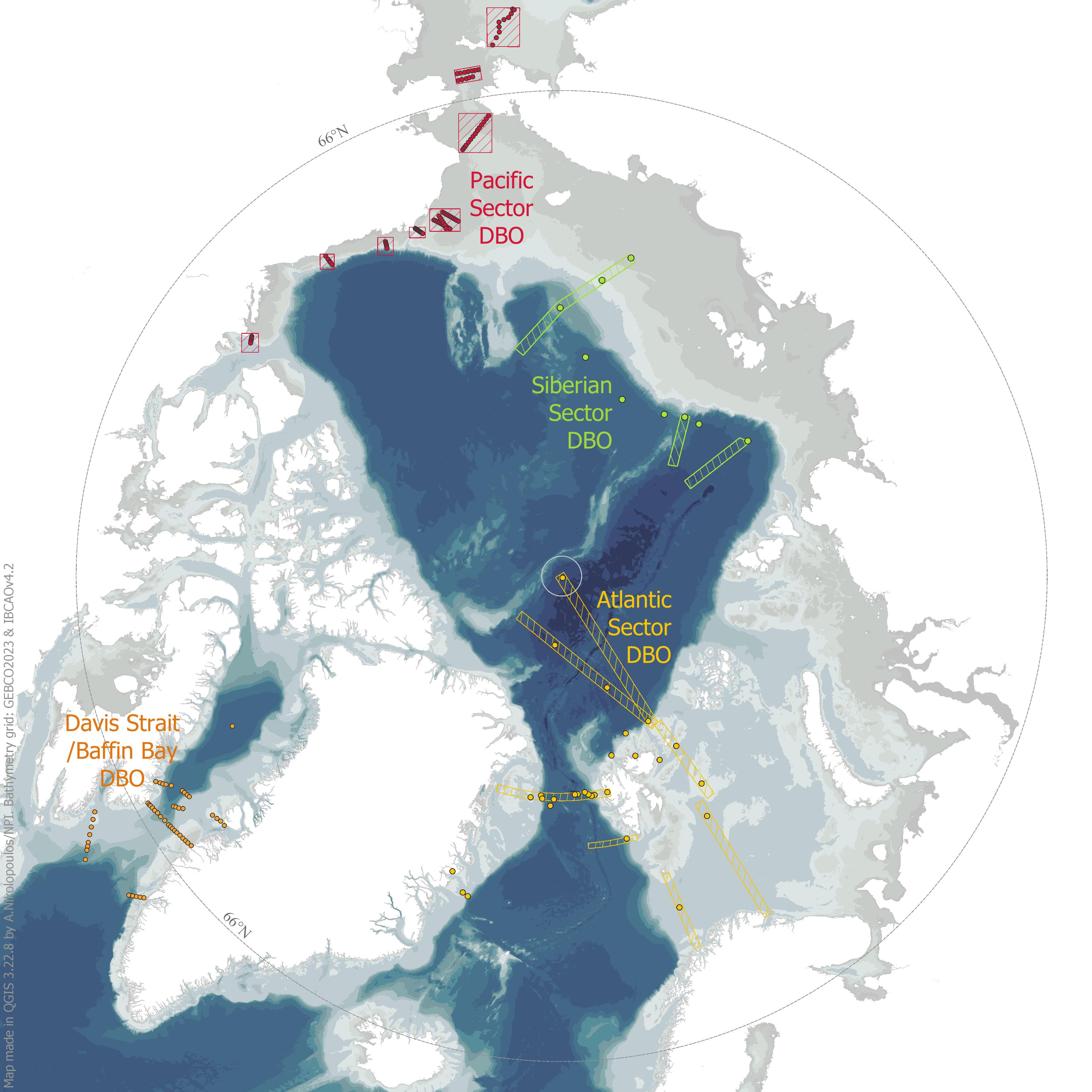
The locations of all four Distributed Biological Observatories overlaid on a bathymetric map of the Arctic Ocean also illustrated on the A-DBO website.
- Piloting the development of the Shared Arctic Variables SAV concept on permafrost, wildfire, and sea ice as a new, inclusive and equitable approach for Arctic observing
- Release of new Arctic Services:
- “Event Database of Community Based Monitoring Using Oral Histories, Indigenous Knowledge and Local Knowledge”, a co-created, long-term living portal of Indigenous Knowledge leading to transformation of the “Unknown histories of the Arctic” into new ways to engage and understand;
- Arctic Landscape EXplorer ALEX, an online viewer for permafrost disturbances displaying landscape changes;
- AUROAE, an online tool to retrieve daily particulate matter observations and atmospheric forecasts feeding an Artificial Neural Network to improve air pollution prediction; and
- LIS, a customisable web application ‘Lake Ice Service for Arctic Climate and Safety’.
By the end of the project, we expect to achieve the following results:
- Enhanced cooperation and coordination, to deliver a more integrated Pan-Arctic Observing System;
- Timely and easier access to interoperable data;
- Development of three sets of observables as output from the Expert Panels for SAVs on permafrost, wildfire and sea ice;
- Significant improvements of the Arctic data system accessibility;
- Arctic PASSION Services that deliver relevant data and benefit to their users;
- Support tools based on numerical models to optimise observation networks;
- Identification of improvements for the Copernicus Arctic Hub;
- Societal Benefit Assessment tools for Arctic observing;
- Knowledge-based support for different policy and governance levels;
- Establishment of consented communication channels between local and regional Arctic inhabitants and governance structures for Arctic observing;
- Creation of a roadmap for an integrated observing system internationally embedded and inclusive for a more holistic approach;
- ‘GEO initiative’ status for Arctic GEOSS.
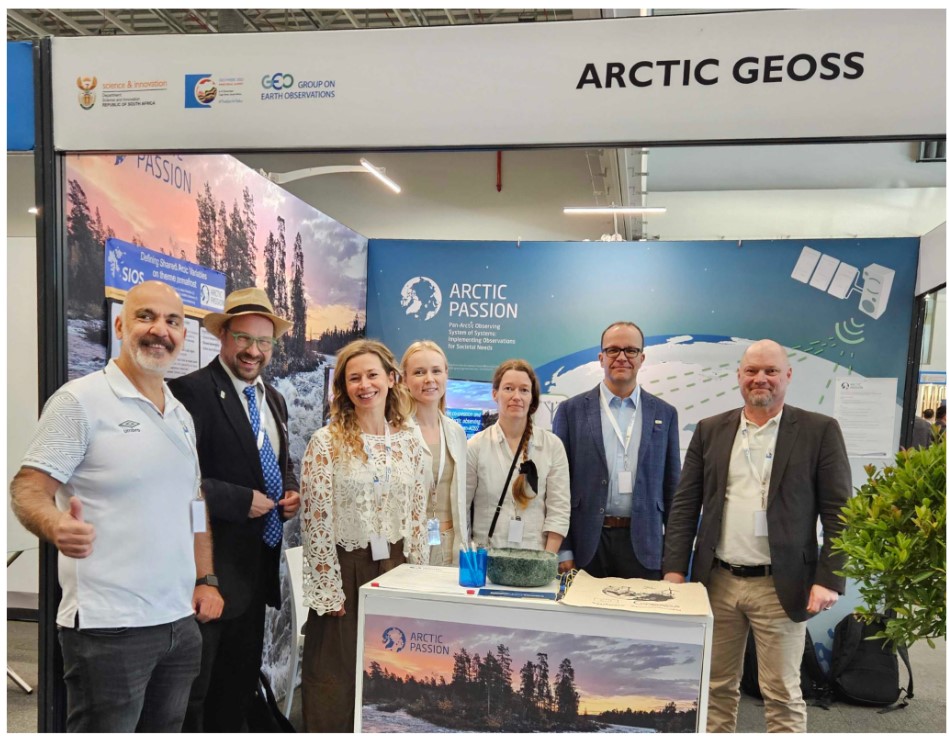
Our ultimate goal is to create long-lasting impact
We foresee potential to to impact on how Arctic observing system is designed, how it operates and how the co-created results are used. The potential impacts include:
- Implementation a ‘GEO Initiative’;
- Enhanced use of Earth observation (EO) and science-based knowledge, Indigenous Knowledge and local knowledge, for sound and effective decision-making;
- Support of the 2030 Agenda for Sustainable Development and Paris Agreements, the Sendai Framework the ‘European Green Deal’;
- Strengthening of Earth Observation capacity;
- Improved handling, archiving and interoperability of environmental data;
- More coherent data management, using GEO(SS) Data Management Principles and best practices;
- Strengthening of the Indigenous Peoples’ voices in the overall Arctic observing system context;
- Strengthening of the role and visibility of Europe in Arctic observing;
- Furthering of a more sustainable finance and investment of Arctic observations;
- Enhanced coordination of Arctic projects and programmes on a pan-Arctic scale.
We still have about 15 months of the project ahead of us and much to achieve. The interesting results or developments that have high potential to be utilised during and after the project - so-called key exploitable results - are available on the EU's Horizon Results Platform. You can view our progress, main results and publications on the EU's Community Research and Development Information Service (CORDIS).
